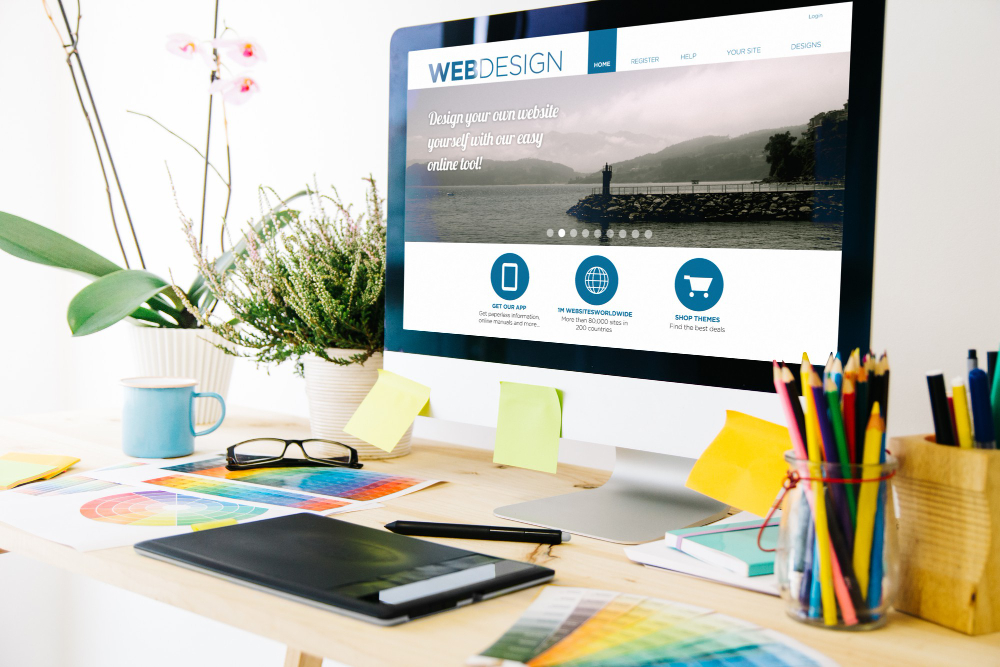
Creating a website is easy; designing one that stands out and converts visitors into customers is the real challenge. The differences between a mediocre website and an exceptional one often lie in the details of its design. From aesthetics to usability, web design is the critical factor that determines whether a user stays or leaves.
If you're creating or revamping a website, understanding and implementing key web design principles is essential. This blog explores seven vital principles of web design that elevate websites to the next level. By the end, you'll know exactly what your website needs to be visually appealing, user-friendly, and highly functional.
Why Web Design Matters
Your website is often the first interaction potential customers have with your brand. Within seconds of landing on your site, visitors form an impression about your business. A poorly designed website may result in high bounce rates and lost opportunities, while a well-crafted site can build trust, improve user engagement, and lead to more conversions.
The Numbers Don’t Lie:
- 75% of users judge a company’s credibility based on its website design.
- 88% of users won’t return after a bad online experience.
Clearly, web design can make or break your online success.
7 Principles of Effective Web Design
1. Simplicity is Key
Web design isn’t about cramming as much as possible into every page. Less is more when it comes to creating clean, simple designs that are visually appealing and easy to use. A clutter-free design allows users to digest information efficiently and helps your key messages stand out.
How to Keep it Simple:
- Use minimal text and concise headings.
- Choose a clean, modern layout with clear sections.
- Avoid overwhelming users with unnecessary elements like auto-playing videos or pop-ups.
Pro Tip: Stick to a neutral color palette with 2-3 accent colors to ensure your site looks polished.
2. Put User Experience (UX) First
At its core, your website should prioritize the needs of its visitors. A good user experience means the site is easy to use, loads quickly, and provides users with what they’re looking for in minimal clicks. Test your site regularly to identify UX pain points that could push visitors away.
Features of Good UX:
- Quick load speeds (ideal under 2 seconds).
- Mobile responsiveness to ensure usability on smartphones and tablets.
- Intuitive navigation with clear menu structures.
Fact: A slow-loading website increases bounce rates by 32%, so optimizing speed is critical.
3. Strong Visual Hierarchy
Visual hierarchy refers to arranging elements on a page so users naturally focus on the most important areas first. This ensures visitors immediately see key messages, CTAs, or products you wish to highlight.
How to Create Strong Visual Hierarchy:
- Use larger fonts for headlines and smaller fonts for subheadings or body text.
- Position your most important content at the top of the page (“above the fold”).
- Use contrasting colors to highlight CTAs like “Shop Now” or “Get Started.”
4. Consistency Builds Trust
A consistent design anchors your brand and improves overall user experience. Your fonts, colors, button styles, and overall layout should feel cohesive across every page of your website.
Tips for Maintaining Consistency:
- Stick to a maximum of 2-3 fonts throughout the site.
- Use a consistent color palette that matches your brand identity.
- Ensure similar elements (e.g., buttons, headings) look the same across pages.
Example: If you use rounded buttons on your homepage, don’t switch to sharp-cornered buttons elsewhere. Small inconsistencies can make your design feel amateur.
5. Mobile-Friendly Design is Non-Negotiable
With over 50% of global web traffic coming from mobile devices, your website must provide a seamless user experience on smaller screens. Mobile responsiveness ensures your design adjusts automatically to fit any screen size while remaining fully functional.
Features of a Mobile-Friendly Website:
- Text that’s readable without zooming.
- Buttons that are large enough for tapping.
- Simplified navigation menus for small screens.
Pro Tip: Test your website on multiple devices (both iPhones and Androids) to ensure smooth performance.
6. Content and Readability Matter
A great design can only take you so far if your content isn’t compelling or easy to read. Pair concise, actionable messaging with legible fonts to keep users engaged.
Tips for Readable Content:
- Stick to short paragraphs (2-3 lines max).
- Use bullet points to organize ideas.
- Choose fonts like Arial or Roboto for better readability.
Bonus Tip: Don’t forget about SEO! Integrating keywords naturally into your content helps improve your website’s visibility in search engine results.
7. Drive Action with Clear CTAs
Every effective website needs strong calls to action (CTAs) to direct users toward their next step, whether that’s subscribing to a newsletter, purchasing a product, or contacting your team.
Characteristics of an Effective CTA:
- Uses clear, action-oriented phrasing like “Shop Now” or “Start Your Free Trial.”
- Stands out visually with contrasting colors or bold fonts.
- Is placed strategically where users will naturally look (e.g., end of page or after product descriptions).
Creating a Website That Converts
Web design is more than aesthetics; it’s about creating a seamless, enjoyable experience for your audience. By keeping simplicity, UX, mobile-friendliness, and content clarity at the forefront of your priorities, you’ll build a website that both looks great and drives conversions.
If you’re aiming for a design that’s both functional and visually impressive, it’s okay to seek professional help.
Need Professional Guidance?
Your website deserves to shine. If you're ready to take your online presence to the next level, we’re here to help! Contact REK Marketing & Design today to get started with a web design that delivers results.